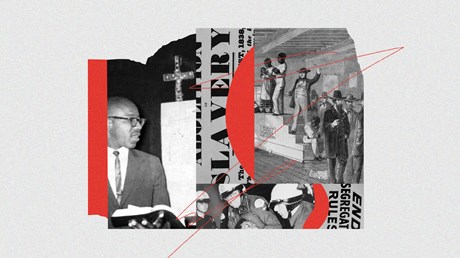A violent and sinful history calls for a clearer presentation of the gospel.

John Perkins stood up at a planning meeting for a Billy Graham crusade in Jackson, Mississippi, in 1975.
The Black pastor and civil rights activist was invited to the meeting, along with a group of African American clergy from the area, because Graham himself had insisted the evangelistic event would be desegregated. Black and white Mississippians would hear the gospel together. Perkins loved Graham and his powerful gospel message, and he was excited to hear that the world’s leading evangelist was taking practical steps to end segregation in the church.
So he went to the Holiday Inn in Jackson and sat down on the Black side of the conference room, with all the Black pastors, and looked over at the white side, with all the white pastors.
Then he stood up.
He asked the white pastors whether their churches were committed to accepting new converts from the crusade into their congregations if the born-again brothers and sisters were Black.
He didn’t think they were ready for that in Mississippi. And if they weren’t ready, he didn’t know whether he was either.
“I don’t know whether or not I want to participate,” Perkins said, “in making the same kind of white Christians that we’ve had in the past.”
He was thinking of all the white Christians who had closed the doors of their churches to Black people. And the white Christians who had supported the Mississippi Plan to stop Black people from voting so they could, as one state legislator described it at the time, “establish white supremacy in the State, within the limits imposed by the Federal Constitution.”
He was thinking of the white Christians whose only response to racist violence perpetrated on Black bodies was ...
from Christianity Today Magazine
Umn ministry


.gif)

.gif)
.gif)
